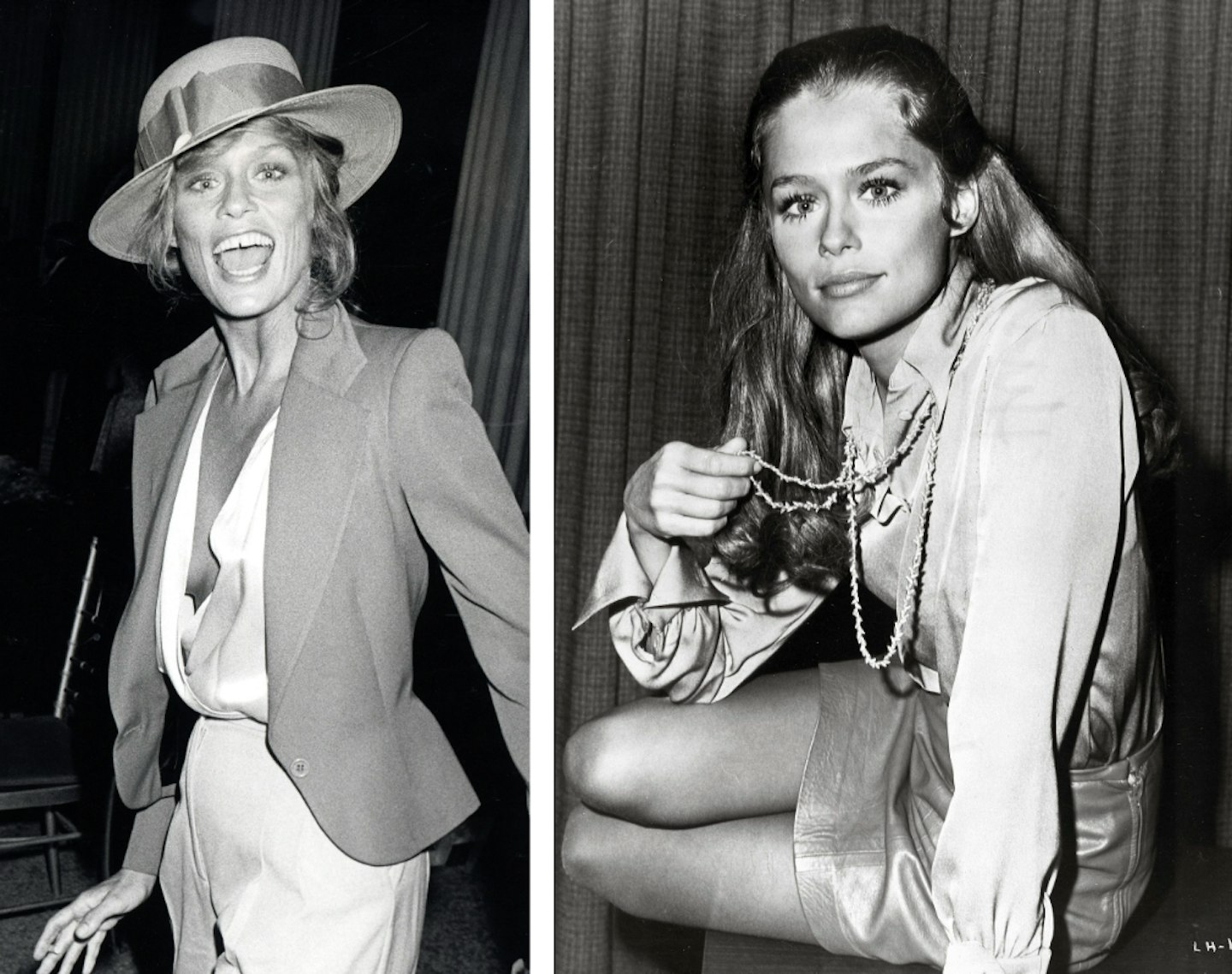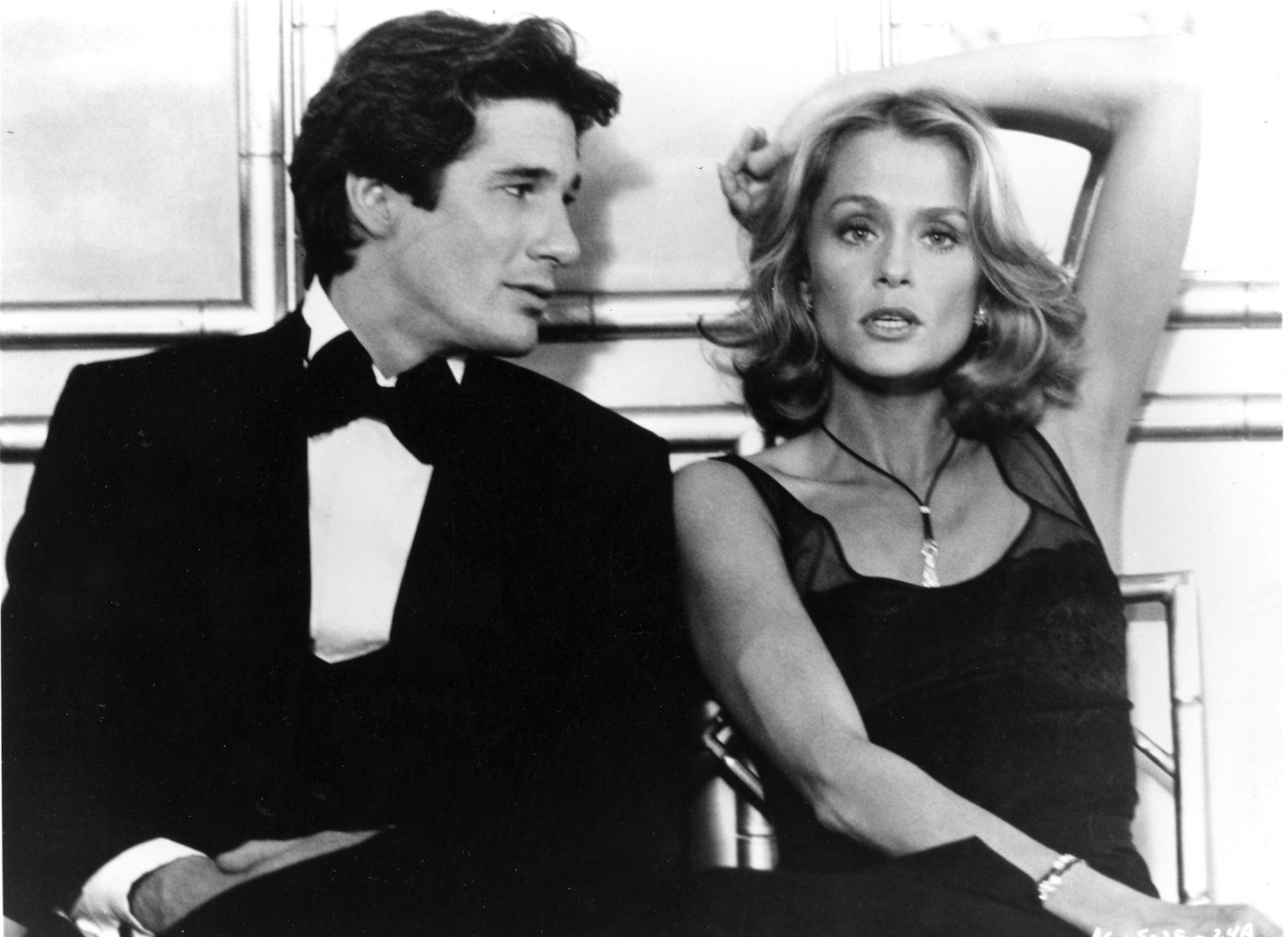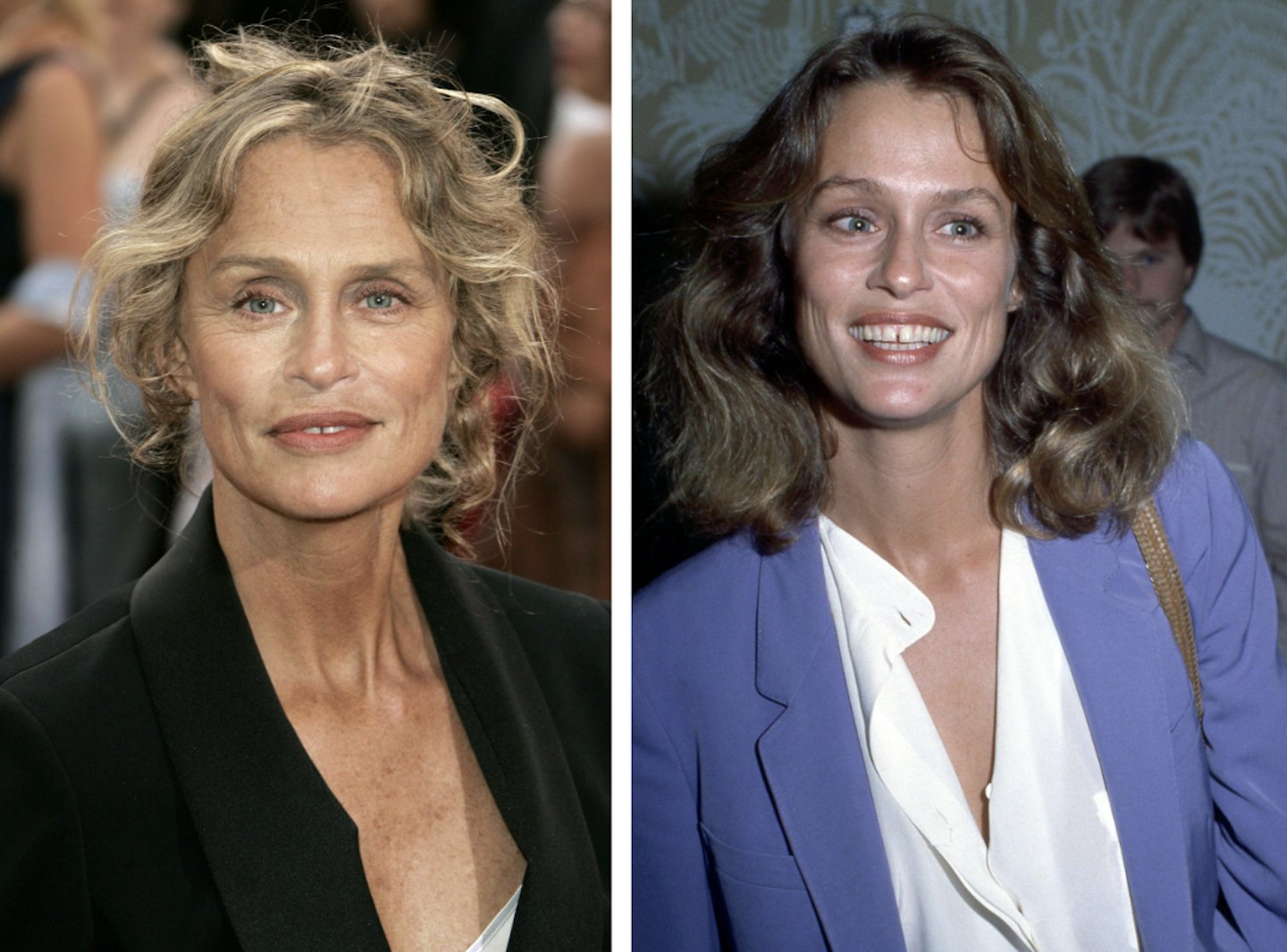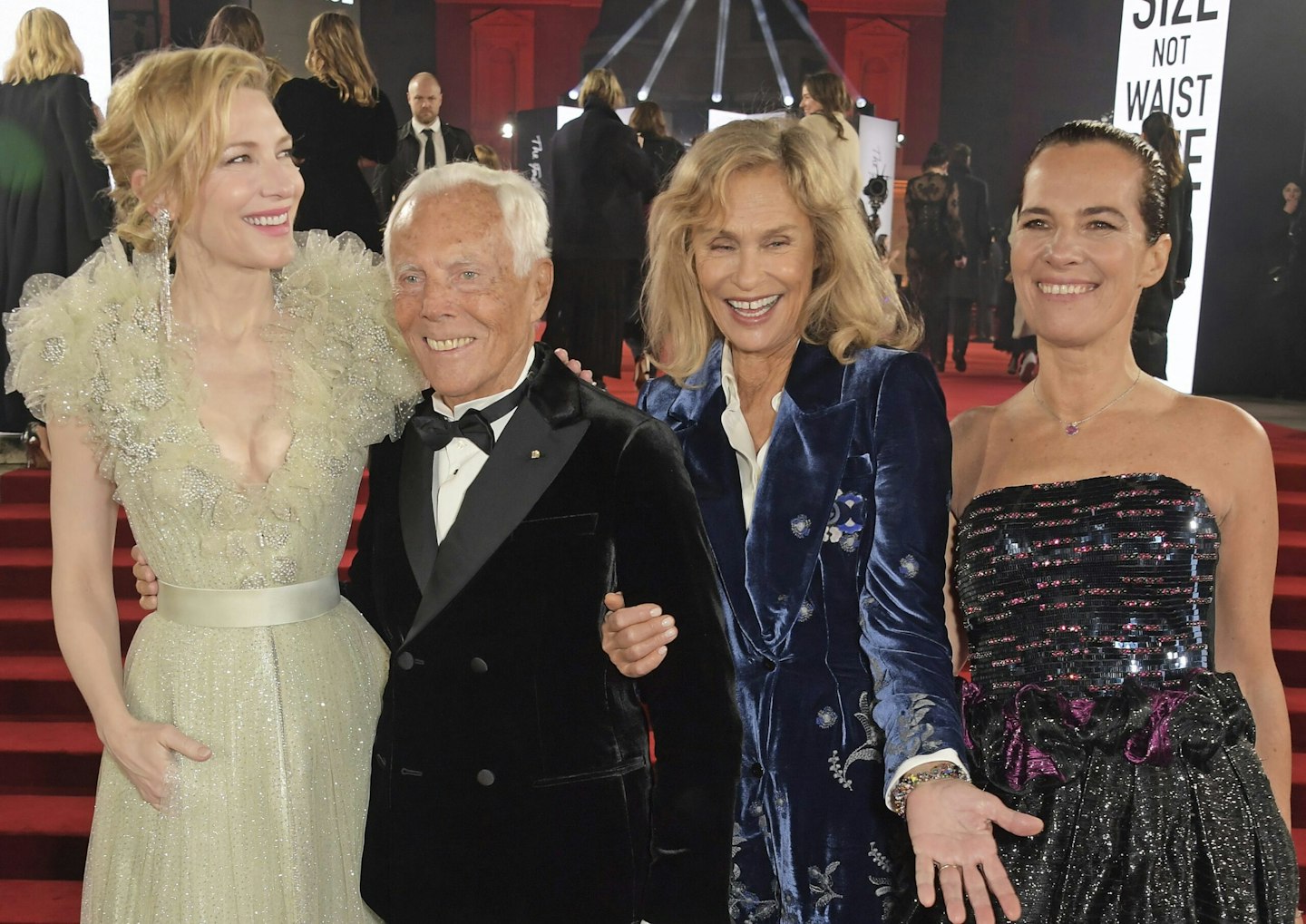I first met Giorgio Armani in the late ’70s, when I walked in a show for him. I didn’t really do shows back then but I’d just been cast in American Giogolo and they wanted me to play the role of the senator’s wife from Beverly Hills. Well, I certainly didn’t know anything about that but the script was so good I wanted her to look a certain way, and back then an awful lot of Hollywood costume people were still stuck in the ’50s. So I got hold of a copy of Women’s Wear Daily and that’s when I saw pictures of Giorgio Armaniclothes for the first time. They jumped right off the page at me. I thought, ‘Wow, that’s it!’ That’s what I want – so simple, so modern. That’s how this senator’s wife character from Beverly Hills should look.

So I arranged to stop by Milan and meet with Giorgio on my way back from the Far East. His people met me at the airport, and I remember they came with a gift of a pair of wonderful antique diamond earrings – wow, the only diamond earrings I ever had in my life! So that was pretty great. I arrived at his office wearing this round, tan woven-reed bag, a kind of backpack, that I’d picked up on my trip. And, like I said, I never did fashion shows but, because I liked his clothes so much and wanted to wear them in American Gigolo, when he asked if I would I said yes.
Getting ready to model in his show, I just threw on this beautiful handmade bag and he smiled and said, ‘Great!’ which was stunning, because usually a designer wouldn’t let you do that; it’s their show and you’re stripped of anything personal. I guess he trusted my instincts.

I was sort of shocked when I met Giorgio, because he was so incredibly chic and handsome. I’d met a bunch of designers by then, but he was something else. And I think we got along because immediately I felt like there was something akin about us. That’s something we say where I come from [Charleston, South Carolina]; ‘akin’ meaning somehow, you’re related. I guess we were both different, separate from the crowd. You know, I did things, like nobody travelled in those days; nobody would think of going on their own to Africa or the jungles of Malaysia, Sumatra or Burma. I’ve lived with tribes including the Kung Bushmen. I’ve slept on the floor of dirt huts in Uganda – in the days of no GPS, cell phones, radios; you were just gone. And that’s why I was modelling and making movies, so I could afford to travel.

Giorgio shared that adventurous spirit – he brought something new to fashion. He defied convention; he explored ways to make clothes that were like nothing that had been made before – simple and modern. He never went in for trends, he carved his own look, so discreet, so effortless to wear, so timeless; you throw them on and you don’t need to think about them again because you know you’re wearing the best of the best, and that they’re going to last forever. I still wear his clothes that I got in the ’70s and ’80s. I honestly think they changed my life because I never had to worry about what I was wearing again. No question, Giorgio was one of the world’s greatest ever designers.
What you have to realise is that Giorgio changed design completely. Everything was so uptight before he came along; he took the formal stuffing out of menswear, made suits that felt effortless to wear in light, soft fabrics and colours, and he did the same for women – and, boy, was everybody copying him as fast as they could. He was such a gigantic hit, he changed Milan. In the ’70s, everything in fashion was about Paris. And the difference between that very first time when I came to Milan, and then seeing the city for all these years after; Milan just grew like a desert plant getting water – that was because of Giorgio.

I guess we were both long shots. He was a long shot because he had never been to design school; he’d studied medicine at the University of Milan and then had to leave to do his military service. After that he went into design and just learned it, self-taught. Well, thank God he wasn’t a medic!
We both had unconventional starts. When I first came to New York City, I worked as a bunny girl at the Playboy Club. I remember seeing a woman walk in a full-length sable with tennis shoes and thinking, wow! It was all vaguely scandalous for a Southern middle-class girl, but I was making $400 a day – not too shabby for an 18-year-old. I put myself through college in New Orleans by working at night as a cocktail waitress. I came back to New York with $200 in my pocket, answered an ad in The New York Times to be a house model for Christian Dior, but that was only $50 a week. Editorial models made all the money, so I went around the agencies, getting turned down each time, until the last, and best, Eileen Ford. You were supposed to be at least 5ft 8in – I wasn’t even 5ft 7in, but I lied and learned to walk in high heels. I was making $60 an hour – that’s when I understood that my face was a powerful commodity and my passport to do what I’d wanted to do since I was five – see the world, every part of it. I went to Europe – to all the shows in Paris. I worked with Mr Irving Penn and Mr Richard Avedon – God, I was lucky to work with the world’s greatest ever photographers. Then I got Revlon [a $250,000 beauty con- tract worth $1.5m today], it was like getting an athlete’s contract.
I was almost 30, just starting to feel my oats, beginning to look good because I’d grown some brains. Then, at around 47, I became invisible; it was like women my age and above were supposed to hide ourselves. It suddenly changed around 60, I was working again; in my seventies, I was even back on the catwalk. Giorgio was a constant friend to me; I saw him pretty much every year for the last 50. He never thought I was out of fashion. He always wanted me to come to this and that. Look, there are always times when you’re not in fashion and you don’t get the jobs, but with him it was a constant friendship; once you were his real friend, that was it.

And Giorgio had lots of wonderful friends – legends! One day I was coming in late to pick out an outfit to wear to the show and bumped into Tina Turner, throwing arms around each other like we were old soul mates– I was always a massive fan, there was just no one like her. I also met the great Glenn Close – we once stayed up all night, drinking, talking and laughing – and the great Cate Blanchett. I mean, his whole gang, every one of them has multiple Academy Awards, Grammys, all of it – these people, they fell in love with him. And then there was just me, a model. So when I read that he called me his ‘first muse’, well, my heart just flopped open and I felt about five inches taller, so terribly good and proud. I guess it was his brain and his heart that just made a very extraordinary, genius person. And everything else that he did – hotels and lifestyle – you’ve got to have been organised enough to have been able to share it with everybody else, right? That was a big deal. That made him a life leader. And if there’s some kind of resilience I’ve learned from him, one life lesson, it’s this: think it out, stay strong and carry on.
Rebecca Lowthorpe worked as fashion director for Grazia from 2016 to 2019; she is currently Grazia’s acting assistant editor, overseeing fashion and beauty content.
Image credits: Courtesy of Giorgio Armani, Alamy, Dave Benett/Getty
